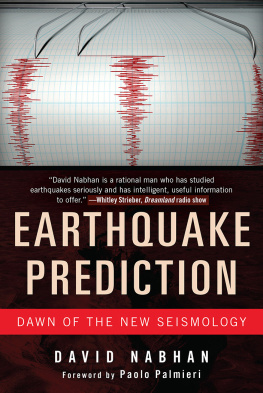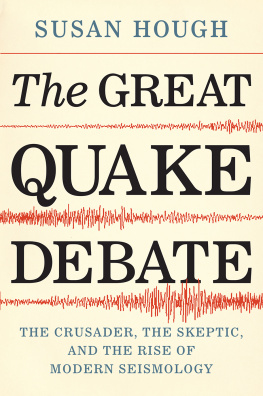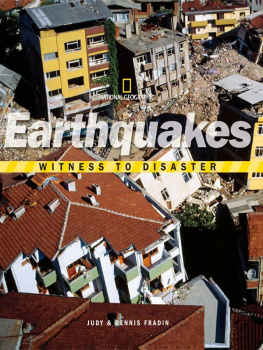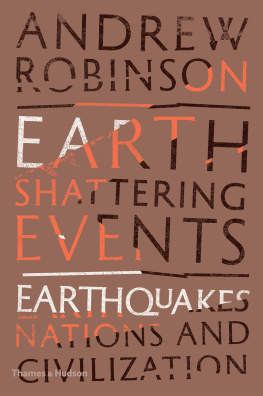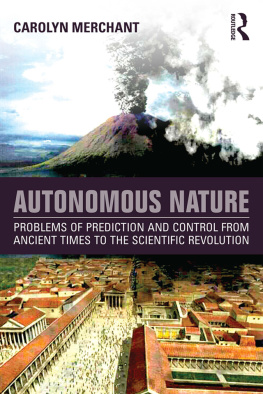Disclaimer: The publisher is grateful for the use of photographs in this work reprinted from the archives of the United States Geological Survey (USGS), NASA, NOAA, FEMA, the US Army and the Library of Congress. Nothing is implied by their use, however, to represent in any way that those agencies and institutions endorse or recommend any part of this work.
Copyright 2017 by David Nabhan
All rights reserved. No part of this book may be reproduced in any manner without the express written consent of the publisher, except in the case of brief excerpts in critical reviews or articles. All inquiries should be addressed to Skyhorse Publishing, 307 West 36th Street, 11th Floor, New York, NY 10018.
Skyhorse Publishing books may be purchased in bulk at special discounts for sales promotion, corporate gifts, fund-raising, or educational purposes. Special editions can also be created to specifications. For details, contact the Special Sales Department, Skyhorse Publishing, 307 West 36th Street, 11th Floor, New York, NY 10018 or .
Skyhorse and Skyhorse Publishing are registered trademarks of Skyhorse Publishing, Inc., a Delaware corporation.
Visit our website at www.skyhorsepublishing.com.
10 9 8 7 6 5 4 3 2 1
Library of Congress Cataloging-in-Publication Data is available on file.
Cover design by Rain Saukas
Cover photo credit: iStock
Print ISBN: 978-1-5107-2097-8
Ebook ISBN: 978-1-5107-2098-5
Printed in the United States of America
Nabhans theory deserves to be taken note of.
Dr. Kate Hutton, chief seismologist, California Institute of Technology, to Los Angeles Weekly, April, 1997
This is simple but brilliant observation, followed by reasonable applications; impossible to dismiss as coincidence.
Dr. Cort Stoskopf, Popular Science Radio, 2013
Knowing when an earthquake might strike may be as simple as tracking in the sky where the sun and moon are. If you believe that predicting earthquakes is impossible then everything you think you know about it could be wrong.
Thom Hartmann, RT Television, May 20, 2014
What if I were to tell you that nearly every single deadly Southern Californian earthquake in the past happened at dawn or at dusk and during a new or full moon?
Paul Magers, news anchor, CBS 2, Los Angeles, April 30, 2014
If proven this would be the Holy Grail of seismology.
Conan Nolan, news anchor, KNBC News, Los Angeles, 1997
Nabhans forecasts nailed three of the largest seismic events on the West Coast in 1996.
Erin Aubrey, staff writer, Los Angeles Weekly, 1997
There you go; seems to me youre right .
George Noory, Coast to Coast AM , November, 2011
David Nabhan is the man who says hes worked out how to predict earthquakes in Southern California quakes happen during either a new or a full moon, and within three hours of dawn or dusk.
London Daily Mail , June 1, 2014
This is the first guy to go back and check what all those seismic events have in common? The idea that it just took somebody to say lets look and see if theres a pattern is pretty shocking to me.
Scott Cox, KERN TV/Radio June 3, 2014
While some studies indicate that tidal effect may have an effect on smaller quakes, theres no evidence they have an effect on bigger quakes.
Dr. Tom Jordan, director, Southern California Earthquake Center, to AOL News , 2010
Weve got a guy coming on who predicted a quake the last time on the show; I dont know what to make of this earthquake prediction stuff.
Howard Stern, Howard Stern Show , January, 1998
Ladies and gentlemen, you read it here first: Nabhans near dead-on calculation for the August 20 shaker near Wrightwood.
Theresa Moreau, Pasadena Weekly , 1998
Whether or not Nabhan can predict earthquakes, he certainly predicts seismic skepticism.
David Moye, America Online News , 2010
Its such a no-no. Seismologists wont even talk about it!
Kate Delaney, America Tonight , 2010
Nabhan is confident enough in his work to urge government leaders to take action and prepare for major tremors during certain periods of time.
Andrew Ireland, World Net Daily , July 17, 2014
Theres a huge difference between a prediction and an advisory. But the hardships unprepared Valley residents face if the Big One hits? Thats a promise.
Jeff Jardin, Modesto Bee , June 13, 2013
Its simply mind-boggling that with the evidence Nabhan has placed in front of scientific and governmental authorities over the last two decades, that they are still reluctant to move forward to at least consider the advisory system he proposes. Simply mind-boggling.
Rob Mc Connell, The X Zone Radio Show , 2011
Whats wrong with trying to warn people? How does this hurt anyone?
Wendy Snyder, WGN, Chicago, August 7, 2014
Were not interested in anyone saying the skys falling, but David Nabhan is a rational man who has studied earthquakes seriously and has intelligent, useful information to offer.
Whitley Strieber, Dreamland Radio , 2011
An intriguing and fascinating book. Nabhans simply asking us to look at the data, the way science used to be done. Heres the evidence, you look at it and figure out what it means.
Dave Bowman, KFIV, Modesto, June 20, 2014
David Nabhan is no stranger to controversy for his belief that we can predict earthquakes to some degree. His theory is pinned to gravitational tides, and these are immense forces!
Faune Riggin, Morning News, KZIM & KSIM, Southeastern Missouri, 2013
This is a no-brainer for me; facts are facts.
Rick Wiles, Trunews , June 10, 2014
His ideas warrant better scrutiny, because maybe there is a grain of truth in his hypotheses and all of us deserve the best chance to survive the next Big One.
David Fox, Anchorage Press , August 2015
This is the multi-billion dollar question. Does David Nabhan have the answer?
David Page, KSRO Morning News , San Francisco Bay Area, 2011
To my family,
and to my friends on the West Coast,
and to the teachers and students of Los Angeles.
Contents
Foreword
T his remarkable book challenges some important views that most educated people, both laymen and scholars, tend to share regarding contemporary science, daring to question the dogmatism that resides in our education, research, and social systems and which shapes our politics and culture. Weve been told constantly by the experts, for example, that earthquakes cannot be predicted, and that therefore science cannot help us plan for the unavoidable event when seismic phenomena should disrupt our daily lives. The scientific community, however, often shies away from the social responsibility that is incumbent upon them regarding not only seismic forecasting but other controversial topics as well, notwithstanding the massive investments in research funded with taxpayers money. Regarding some topics, its almost as if ignorance is the preferred option.
Lest there be any doubt, and worse than not knowing, there is still the tendency in science from time to time to turn away from the scientific method and to pounce precipitously either for or against new ideas, often with deleterious results. As a professor of the history of science, Im only too well aware of the numerous debates in science addressed in this book that went terribly wrong owing to scientists neglecting to adhere to their own code: freedom of inquiry. The ill-fated slogans that are inextricably interwoven with those failures of the past were shouted with great conviction: manned flight is impossible, Earth does not rotate, the continents do not drift, jet streams are fantastical, and so many more. Seismic forecasting also was until very recently a prominent item among that list, giving proof that after so many centuries of lessons modern science can still at times embrace the same kind of self-assurance that was visited upon Galileo in the sixteenth century. This in itself, aside from earthquake prediction, is an incredibly important problem that the book attempts to assess, and which invites us all to evaluate. After all, science was born when the confluence of Greek logic and mathematics, empiricism, and Christianity merged into the marketplace of ideas and ideological conflict, and it still may bear vestiges of the denominations and orders with which it rose up in the sixteenth century and consolidated its power in the seventeenth. Scientific reform was necessary then and should be ongoing now if we are to inoculate ourselves from doctrinaire thinking that should otherwise pervade our scientific communities.

